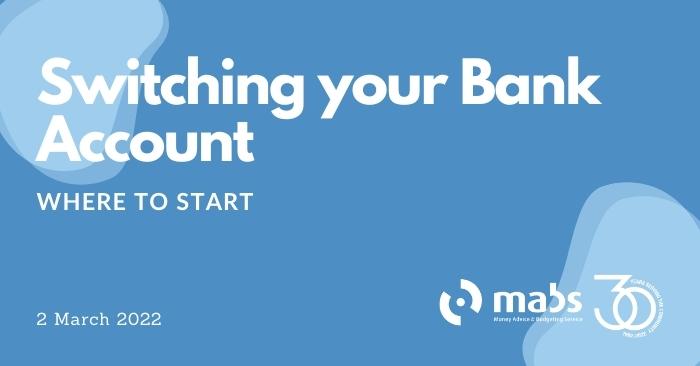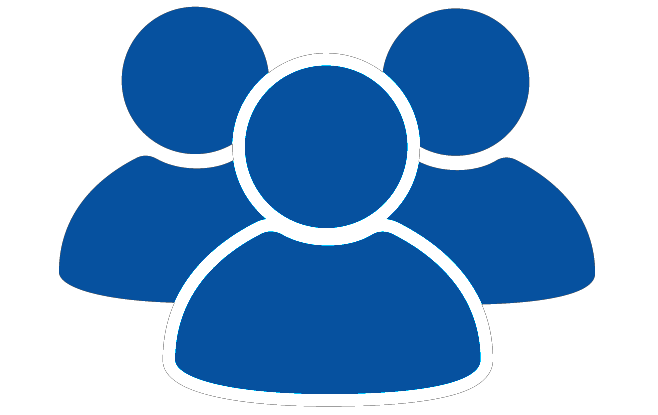Switching your Bank Account

Switching your bank account does not have to be complicated and taking some time to research and prepare will help make the process easier.
There are many reasons to switch your bank account. Perhaps you want to switch to make savings on bank charges, or another bank is offering benefits that work for you.
You might be considering a change because you have an account with one of the banks preparing to leave the Irish market. It might be that you’ve never had a bank account and you would like to open one.
Whatever the reason, we’re here to help you get prepared. Keep reading to learn more and follow our steps on getting started.
Get Prepared
First things first, you need to research what bank account you’d like to switch to – you can find tips to help you in Make Decisions(link) below.
As you’ll be opening a new bank account, you’ll need a photo ID and proof of address. It’s no harm to have a couple of options ready, such as an electricity bill or your TV licence. These must be issued within the last 6 months.
Did you know that as an EU resident you are entitled to a basic bank account? The Irish Banking Culture Board (IBCB) has produced a useful guide.
Make Decisions
Choosing a new bank account and knowing what is best for your needs can be challenging. Here are some things to consider to help make your decision:
- What fees, charges and costs are associated with the account?
- Can you avoid certain charges with a flat fee or by maintaining a minimum balance?
- How easy is it to access their customer service if you have an issue or need to change details?
- Do they offer services like Apple or Google Pay?
- Word of mouth – have any of your friends or family got a recommendation for their bank?
- Has the bank earned a good reputation for customer service?
- The availability of cash services like ATMs and lodgements, some banks are cashless and don’t offer lodgement services.
- Where the nearest branch and what is the branch opening hours?
What’s Next?
So, you’ve chosen a new account that will suit your needs. When you approach your new bank to open the account, you’ll be asked two questions:
Question 1 – What date would you like to switch?
The switching date is the date you agree with the new bank to start the switching process. Your new account must be up and running within 10 working days of this date.
Be mindful of the date you choose! Why? Because you could be hit with extra charges if direct debits (DD) or standing orders (SO) are charged to your account and there is no money to pay. It’s important to leave a few days breathing space.
This will help to ensure direct debits don’t bounce and cost you fees during the switching process. It’s recommended to choose a time where there is little activity on your account. You should stop using your old account from the agreed switching date. This will ensure that you don’t incur extra charges and can clear any payments on the old account – especially contactless as these can take up to 5 days.
You can choose to do the switch yourself over a longer period. However, this will mean you need to transfer all your direct debits and standing orders yourself.
Important note: Running your old account and new account together, until all payments are switched over to the new account, can incur additional fees from the daily cost of running your accounts.
Question 2 – Are you closing your old account?
You can choose to keep your old account open or close it completely when switching. If you are keeping your old account open for any reason, be aware that you will continue to incur fees from both banks until you close the old account.
If you opt for the bank to do the switching, they’ll send you a switcher pack. This will include everything you need to get your bank account and payments transferred across. If you are not going through the switcher process, you’ll be looking to open a new account.
Be sure to…
- Get a list of all your payee account numbers – such as family or friends or your Credit Union so you can set them up on your new account.
- Notify your employer/payroll of your new account details well in advance of your next pay packet.
- Tell anyone else who lodges money into your account (such as social welfare, maintenance, family) that you will be switching and your new account details and the date you’ll be using the account.
- Pick a suitable date (for example, not when you are due to get paid or when bills are due out – even more reason to have them on the same day!)
- If you have subscription services like Netflix or a gym membership, these are usually linked to your card rather than set up as a direct debit, so make sure to update these with your new card details as soon as you have activated your card.
- If you have your card saved to any online shopping sites or the likes of PayPal, make sure you update your card details or use it as an excuse to delete any saved information to make you more aware of what you’re spending online.
Comparison websites
If you’ve switched your energy provider and want to save more, be sure to check out our tips on everyday energy-saving, routine checks and how to invest now to save more in the long run. If you’ve switched and are still finding your bills very high, talk to MABS.
Next Steps
Switching your bank account does not have to be difficult. Once you take a step back and do your research, it will make the process a lot easier. Keep an eye out for our next blog to discover our top tips on Tackling Debt.
If you have any other questions or would like to speak to a member of MABS, call our National Helpline on 0818 07 2000 Monday to Friday, from 9am to 8pm, WhatsApp 086 035 3141 or find the contact details for your local office.
Disclaimer: This blog does not represent legal guidance and is intended for guidance only. This blog is intended to assist you in making your own decisions, and we will never suggest you use one provider over another.




Facebook
twitter
Instagram